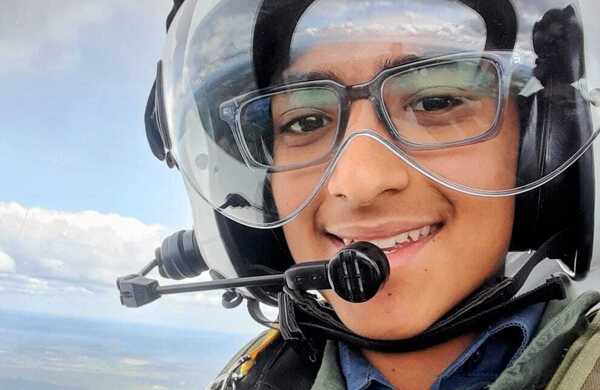My First Sortie as an RAF Cadet

Congratulations to Agastya in Year 8 who was granted permission by the school to participate in the RAF's Air Experience Flying on Friday, 6 June.
Alonside a small group of other air cadets, Agastya received flying training in the RAF's Grob Tutor aircraft at RAF Benson in Oxfordshire.
This is his account of this amaizing experience:
My First Sortie as an RAF Cadet
After an hour and a half drive in our Pilot Officer’s car, 4 cadets from my squadron including me finally made it to RAF Benson in Oxfordshire.
We were then escorted by an officer to a room. There, we were briefed about the basics of flying a plane, which include ‘rolling’, ‘yawing’ and ‘pitching’. We were also taught what instruments to use to control the plane. These include:
The throttle which controls the engine power and speed, the ailerons which control the roll of the plane by raising and lowering the wings, the elevator which controls the pitch of the plane by moving the tail up and down, and the rudder which controls the yaw of the plane by turning the tail left and right.
After lunch, we were taught mid-air emergency evacuation procedures, including how to deploy a parachute.
Finally, after all the theory, it was time for me to pilot (or rather co-pilot) the aircraft! I kitted up in my flying suit, parachute and flying helmet with integrated communication system before boarding the 2-seater Grob Tutor aircraft. This is a single piston engine, 180 horsepower aircraft with dual controls which is used in elementary flying training.
Flying with me was an experienced Royal Air Force pilot. We took off and, in a few minutes were airborne at 6000 feet above sea level (ASL). From that point on, the pilot handed me the controls.
He gave me a series of tasks and instructions to carry out. They mainly consisted of turning the aircraft left or right or ‘rolling’ in aviation terms and moving the nose of the plane up or down or ‘pitching’. So far, uncomplicated. So, imagine my shock when the pilot instructed me to do a full nosedive! To do this, you would have to simply stall the engine and point the nose of the aircraft to the ground for a free fall. Then, you would just let gravity do the rest of the work. This is when one experiences Negative G – when the blood rushes to your head and you can feel your stomach drop. After about 10 seconds of nosediving, I yanked the elevator up to bring the plane back into the normal position.
If that wasn’t exciting enough, the next manoeuvre was when the pilot inverted the plane flying upside down! This was definitely scary!
Mid-air, I had the opportunity to ask the pilot lots of questions over the radio about the control
panels and instrumentation onboard. He asked me if I had anyone in my family who was interested in aviation. When I told him my mum’s uncle was a Group Captain in the Indian Airforce and flew fighter jets, he joked that I was pulling rank on him.
Up in the clouds, I felt a sense of freedom. As I looked outside the window, I could see the earth blanketed in a rolling patchwork quilt of green fields, cars crawling like ants and far into the horizon, I also saw a rain shaft – a narrow grey curtain of rain falling from a cloud.
Wilbur Wright, one of the Wright brothers once said, “More than anything else, the sensation of
flying is one of perfect peace mingled with an excitement that strains every nerve to the utmost. If you can conceive of such a combination.”
This accurately sums up my first sortie - a 30-minute rollercoaster in the sky filled with sheer
exhilaration, numbing terror and overwhelming awe.
Agastya Vellanki Mendiratta (Year 8, June 2025)


